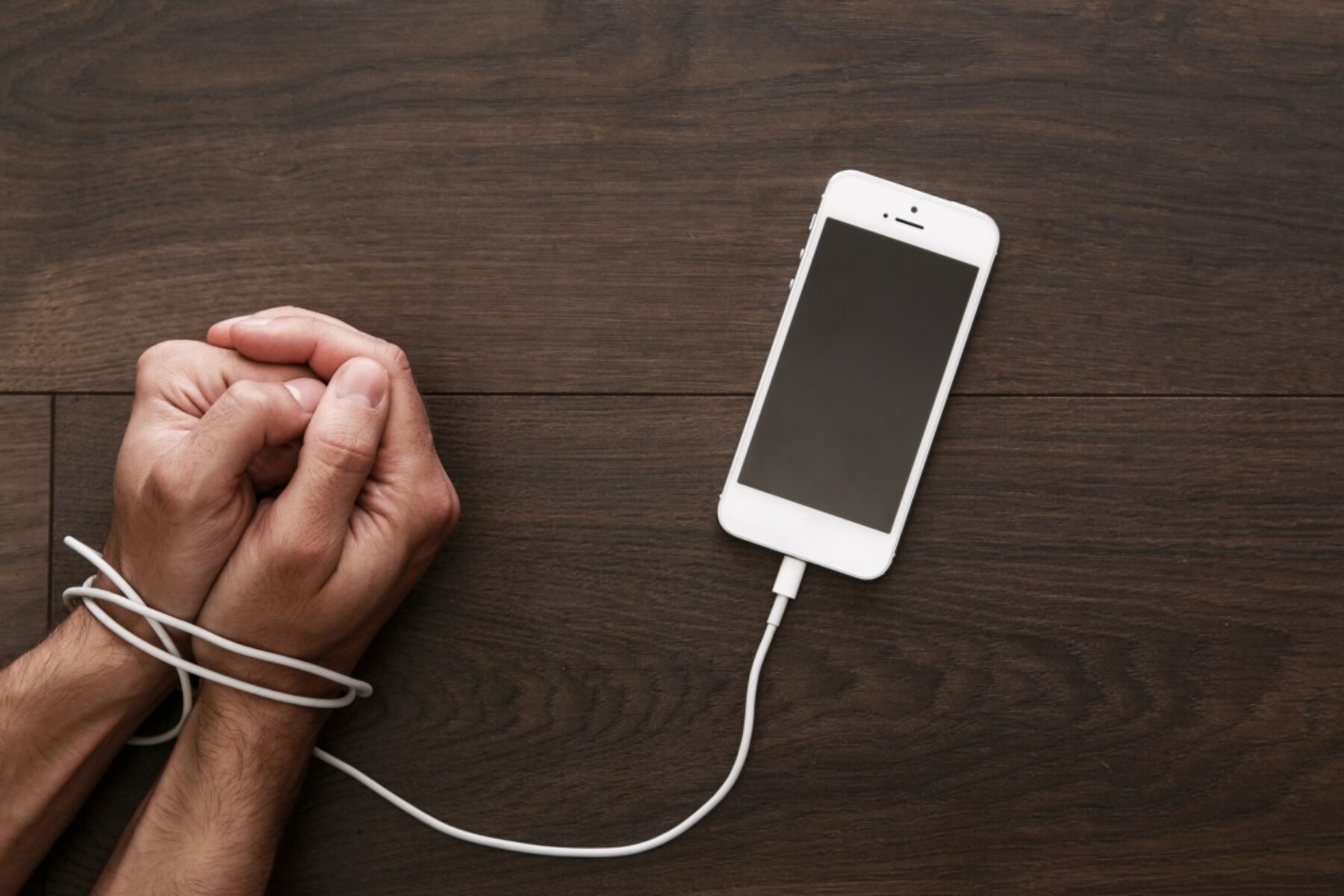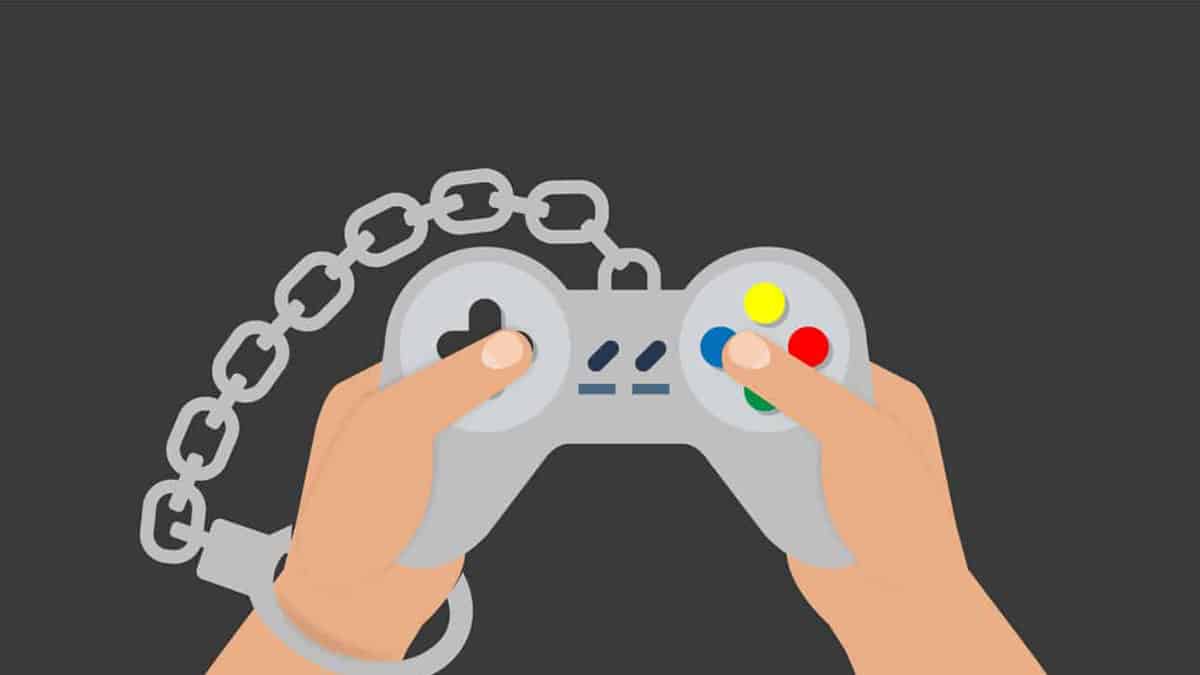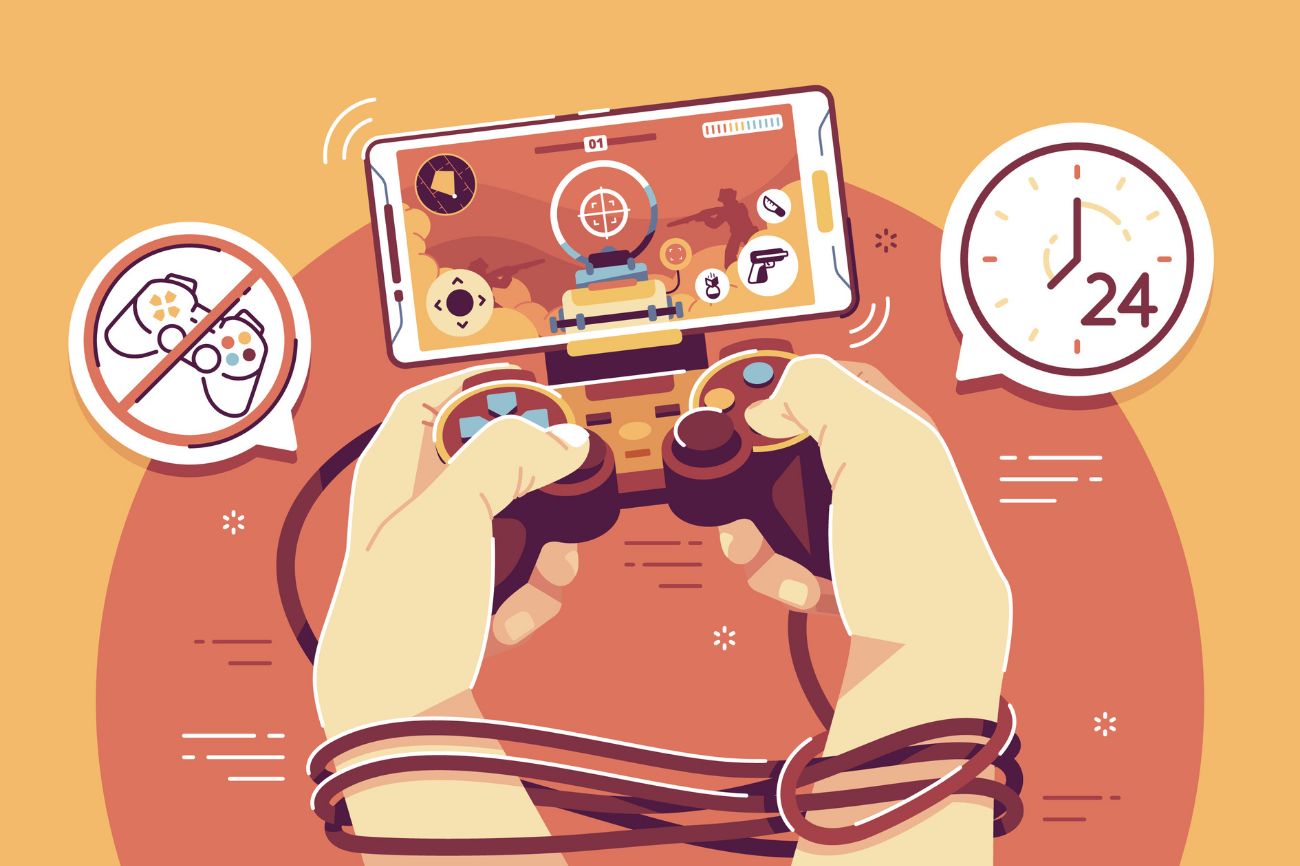Introduction
With the rise of technology and the increasing prevalence of smartphones, it’s no surprise that smartphone addiction has become a real concern for many individuals. In today’s digital age, we rely heavily on our smartphones for communication, information, entertainment, and more. While these devices bring numerous benefits, they can also be a double-edged sword, leading to addictive behaviors that impact our overall well-being.
Smartphone addiction can manifest in various ways, such as constantly checking notifications, feeling a constant need to be connected to the online world, or experiencing anxiety when separated from your device. It can negatively affect your relationships, productivity, and mental health.
Recognizing that you have a smartphone addiction is the first step towards overcoming it. Acknowledge the signs and symptoms, such as spending excessive amounts of time on your phone, feeling a loss of control over your phone usage, and neglecting other responsibilities or activities in favor of your smartphone.
Fortunately, there are strategies you can implement to regain control over your smartphone usage and break free from the grip of addiction. By setting boundaries, creating a digital detox plan, finding alternative activities, developing healthy habits, and seeking support, you can overcome smartphone addiction and improve your overall quality of life.
Recognizing Smartphone Addiction
In order to overcome smartphone addiction, it’s crucial to first recognize the signs and symptoms. Smartphone addiction can be characterized by a compulsive and excessive use of your device, leading to negative consequences in various aspects of your life.
One of the key indicators of smartphone addiction is a constant preoccupation with your device. Do you find yourself constantly checking for notifications, even in situations where it is not appropriate or necessary? Are you unable to resist the urge to pick up your phone and browse social media or play games, even when you know you should be focusing on other tasks?
Another sign of addiction is feeling a sense of anxiety or restlessness when you can’t access your phone. If being separated from your device for even a short period of time makes you feel agitated or uneasy, it may be a sign that you have developed an unhealthy reliance on it.
Additionally, smartphone addiction can impact your relationships and day-to-day functioning. Are you neglecting important responsibilities or social interactions in favor of spending time on your phone? Do you find it difficult to disconnect from your device and engage in activities that used to bring you joy? If so, these could be red flags indicating an addiction.
It’s important to understand that smartphone addiction is not a weakness or a personal flaw, but rather a result of the addictive nature of technology and the way it is designed to capture our attention. Recognizing and acknowledging the signs of addiction is crucial to taking the necessary steps towards recovery.
Remember, identifying these signs does not mean you are a lost cause or that you have to give up your smartphone entirely. It simply means recognizing that your relationship with your device has become imbalanced and taking steps to regain control and create healthier habits.
Setting Boundaries
One of the most effective ways to overcome smartphone addiction is by setting boundaries around your phone usage. By establishing clear guidelines and limitations, you can regain control of your device and create a healthier relationship with technology.
Start by identifying specific times and situations in which you tend to use your smartphone excessively. For example, do you find yourself mindlessly scrolling on social media before bed or constantly checking your phone during meals? Once you have identified these problematic areas, set boundaries to limit your phone usage during those times.
Consider implementing designated “tech-free” zones in your home, such as the bedroom or the dinner table. By keeping your smartphone out of these areas, you create physical spaces where you can disconnect from the digital world and focus on being present with yourself and those around you.
Another effective boundary-setting strategy is to establish designated “tech-free” times during the day. This can be a set period of time, like an hour in the morning or evening, where you commit to not using your phone. Use this time to engage in activities that bring you joy, such as reading a book, going for a walk, or having a conversation with a loved one.
Moreover, consider setting limits on your overall daily screen time. Many smartphones have built-in features that allow you to track and limit your phone usage. Take advantage of these tools and set a maximum amount of time you are allowed to spend on your device each day. This will help you become more mindful of your phone usage and gradually reduce your dependency.
Remember, setting boundaries is not about completely eliminating smartphone use from your life, but rather finding a healthy balance that allows you to utilize your device for its intended purpose while minimizing excessive and addictive behaviors.
By setting clear boundaries and sticking to them, you can reclaim control over your smartphone and build healthier habits that support your overall well-being.
Creating a Digital Detox Plan
In order to break free from smartphone addiction, it can be helpful to create a digital detox plan. A digital detox refers to a period of time where you intentionally disconnect from your devices and focus on engaging in offline activities.
Start by setting a specific duration for your digital detox, such as a day, a weekend, or even a week. During this period, commit to minimizing or eliminating your use of smartphones and other digital devices.
Inform your friends, family, and colleagues about your digital detox plan, so they are aware of your intentions and can provide support. Let them know that you may be less reachable during this period and that you will prioritize offline interactions and activities.
Next, make a list of alternative activities that you can engage in during your digital detox. This could include hobbies you used to enjoy, such as reading, painting, or playing a musical instrument. Explore outdoor activities like hiking, biking, or gardening. Engage in social activities such as meeting friends for a meal or participating in a sports team.
During your digital detox, take time to reflect on how you feel when you are disconnected from your phone. Notice any changes in your mood, productivity, and overall well-being. Use this time to reconnect with yourself and your surroundings.
It’s important to note that a digital detox doesn’t have to be a one-time event. Consider integrating regular digital detox periods into your routine. This could be a weekly “unplugged” day or a monthly weekend retreat from technology. By incorporating these detox periods on a regular basis, you can prevent the reemergence of addictive behaviors and maintain a healthy balance between the digital world and the real world.
Creating a digital detox plan is a proactive step towards reducing your dependency on smartphones and cultivating a healthier relationship with technology. It allows you to take back control of your time and attention, giving yourself the freedom to focus on the present moment and enjoy offline experiences.
Finding Alternative Activities
When overcoming smartphone addiction, it’s important to find alternative activities that can fill the void left by excessive phone usage. By replacing screen time with meaningful and engaging pursuits, you can redirect your focus and develop healthier habits.
One of the first steps in finding alternative activities is to identify your interests and passions. Consider activities that have intrigued you in the past or new hobbies you’ve been meaning to explore.
Engaging in physical exercise is an excellent way to divert your attention from your smartphone. Whether it’s going for a run, attending a fitness class, or practicing yoga, exercise not only improves your physical well-being but also boosts your mood and reduces stress.
Additionally, art and creativity can provide a productive outlet for self-expression. Explore activities such as painting, drawing, writing, or playing a musical instrument. Engaging in creative endeavors can be therapeutic and allow you to tap into your imagination.
Spending time in nature can also be a valuable alternative to smartphone usage. Take walks in the park, go hiking, or plan outdoor adventures. Nature has a calming effect and can help you reconnect with the present moment.
Another option is to cultivate social connections by spending quality time with friends and family. Plan game nights, organize potluck dinners, or simply have meaningful conversations. Building strong relationships offline can be incredibly fulfilling and satisfying.
Reading books or listening to audiobooks is a wonderful way to relax and expand your knowledge. Choose genres that interest you or explore new topics to keep your mind engaged and entertained.
Exploring your local community can also open up a world of opportunities. Attend local events, join clubs or groups that align with your interests, or volunteer for a cause you believe in. These activities not only provide a sense of purpose but also offer the chance to connect with like-minded individuals.
Remember, finding alternative activities is not about completely eliminating technology from your life, but rather diversifying your experiences and finding a healthy balance. Experiment with different activities and find what resonates with you the most.
By exploring alternative activities, you can gradually reduce your dependence on smartphones and discover the joy of living a well-rounded and fulfilling life beyond the virtual realm.
Developing Healthy Habits
In order to overcome smartphone addiction in the long term, it’s important to develop healthy habits that promote a balanced and mindful approach to technology use. By incorporating these habits into your daily routine, you can create a sustainable lifestyle that supports your overall well-being.
First and foremost, practice mindfulness when it comes to your smartphone usage. Be aware of how and why you are using your device. Before picking up your phone, ask yourself if it is necessary or if it is simply a habit or impulse. By bringing conscious awareness to your actions, you can make more intentional choices and avoid falling into mindless scrolling or excessive phone use.
Set specific times during the day when you allow yourself to check and respond to notifications. Use time management techniques, such as the Pomodoro Technique, to allocate focused blocks of time for important tasks without distractions. By creating designated “phone times,” you can avoid constant interruptions and regain control over your attention.
Implement digital wellness features available on your smartphone or download apps that track and limit your usage. These tools can provide valuable insights into your phone habits and help you set healthy usage goals. Utilize features like screen time limits, app timers, and bedtime modes to establish boundaries and enforce regular breaks from your device.
Establish a consistent sleep routine that prioritizes quality rest. Create a “device-free zone” in your bedroom and avoid using your phone or other electronic devices for at least an hour before bedtime. This allows your mind to unwind and promotes better sleep hygiene.
Practice self-care activities that promote relaxation and stress reduction. Engage in activities like meditation, deep breathing exercises, or practicing gratitude. These practices can help you disconnect from the digital world, reduce anxiety, and foster a healthier relationship with technology.
Set realistic goals for yourself regarding phone usage and work towards gradually reducing your screen time. Start by identifying specific activities or hobbies you want to spend more time on and prioritize them over phone-related activities.
Finally, create accountability measures to stay on track with your healthy habits. Share your goals and progress with trusted friends or family members who can provide support and encouragement. Consider joining support groups or online communities focused on digital well-being and smartphone addiction recovery.
Remember, developing healthy habits takes time and effort. Be patient with yourself and practice self-compassion along the way. Celebrate small victories and learn from setbacks as you work towards a more balanced and intentional approach to using your smartphone.
By adopting these healthy habits, you can cultivate a positive relationship with technology and regain control over your life, ultimately leading to improved well-being and a more fulfilling daily experience.
Seeking Support
Overcoming smartphone addiction can be challenging, and it’s important to remember that you don’t have to do it alone. Seeking support from others can greatly enhance your journey towards recovery and help you stay accountable to your goals.
Start by confiding in friends and family members about your struggles with smartphone addiction. Share your desire to change and ask for their understanding and support. Having a strong support system can provide encouragement, guidance, and motivation as you navigate the process of breaking free from the grip of smartphone addiction.
Consider joining support groups or online communities focused on digital well-being and smartphone addiction recovery. These groups can provide a safe space to share experiences, exchange strategies, and learn from others who are facing similar challenges. Connecting with individuals who are going through or have successfully overcome smartphone addiction can offer valuable insights and a sense of camaraderie.
If you find that your smartphone addiction is significantly impacting your daily life and well-being, seeking professional help may be beneficial. Therapists, counselors, or addiction specialists can provide specialized guidance and support tailored to your specific needs. They can help you identify the root causes of your addiction, develop coping strategies, and create a personalized plan for recovery.
Psychologists and mental health professionals can also help address any underlying emotional or psychological issues that may be contributing to your reliance on smartphones. They can assist you in managing stress, anxiety, or depression, which are often intertwined with addictive behaviors.
Remember, seeking support is not a sign of weakness but rather a sign of strength and the willingness to make positive changes in your life. It takes courage to reach out for help, and doing so can greatly increase your chances of successfully overcoming smartphone addiction.
Stay open, receptive, and committed to the process of seeking support. Be willing to listen, learn, and implement the advice provided by professionals and those around you. Engage in self-reflection and actively participate in the recovery process.
By seeking support, you are building a network of individuals who can help you navigate the challenges and obstacles that may arise along your journey to recovery. Together, you can overcome smartphone addiction and create a healthier, more balanced relationship with technology.
Conclusion
Smartphone addiction is a prevalent issue in today’s digital age, but it is not insurmountable. By recognizing the signs of addiction, setting boundaries, creating a digital detox plan, finding alternative activities, developing healthy habits, and seeking support, you can regain control over your smartphone usage and create a healthier relationship with technology.
Recognizing the signs of addiction is the first step towards change. Acknowledge the compulsive and excessive behaviors associated with smartphone addiction, and understand that it is not a personal weakness but a result of the addictive nature of technology.
Setting boundaries around your phone usage is crucial. Establish clear guidelines, allocate specific times for phone use, and create designated “tech-free” zones in your life. These boundaries will help you regain control and maintain a healthy balance between the virtual world and the real world.
A digital detox plan can provide a much-needed break from excessive screen time. Disconnect from your devices, engage in alternative activities, and reflect on the impact of technology on your well-being. Regular digital detox periods can help reset your habits and promote a healthier lifestyle.
Finding alternative activities is key to curbing smartphone addiction. Explore physical exercise, creative endeavors, nature, social interactions, and other offline activities that bring you joy and fulfillment. Diversifying your experiences will help you reduce dependence on your smartphone.
Developing healthy habits is a vital aspect of overcoming addiction. Practice mindfulness, establish tech-free times, utilize digital wellness features, prioritize sleep and self-care, and gradually reduce screen time. These healthy habits will support your overall well-being and assist in breaking free from smartphone addiction.
Lastly, seeking support is not a sign of weakness but a sign of strength. Lean on your support system of friends and family, join support groups or online communities, and consider seeking professional help if necessary. Surrounding yourself with understanding and guidance can greatly enhance your journey towards recovery.
Remember, overcoming smartphone addiction is a process that takes time, effort, and self-compassion. Be patient with yourself, celebrate small victories, and learn from setbacks along the way. By implementing these strategies and making a conscious effort to cultivate a healthier relationship with technology, you can reclaim control over your life and enjoy a more balanced and fulfilling existence.

























